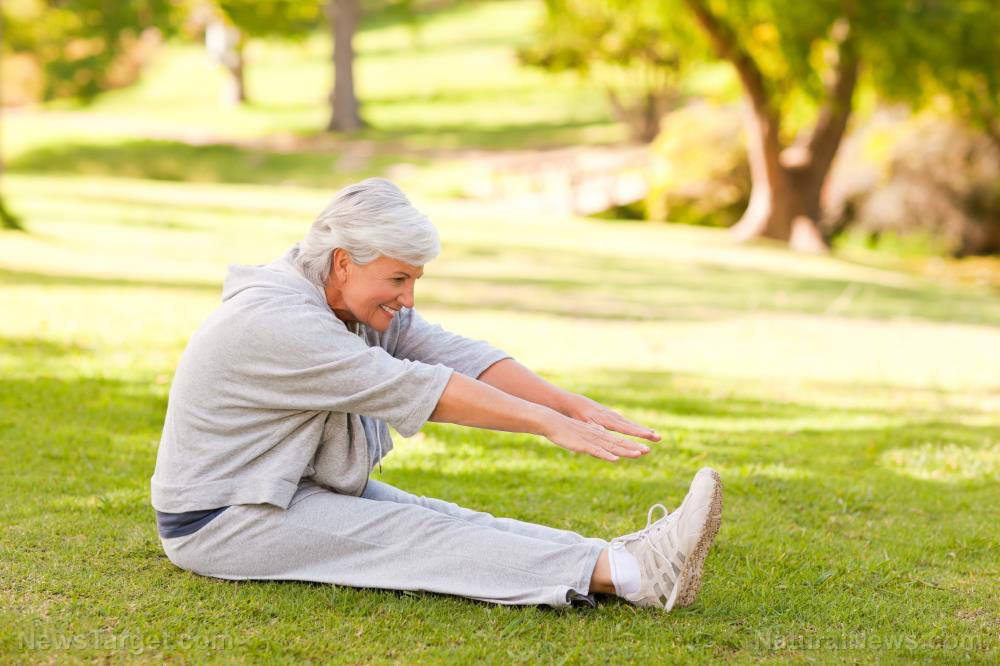Even couch potatoes can benefit from physical activity: It’s never too late to start exercising, say researchers
02/25/2020 / By Darnel Fernandez

Engaging in exercise is, without a doubt, good for your overall health. Numerous studies have shown that exercising can lower the risk of developing chronic diseases like cardiovascular disease, cancer and even diabetes. But can you actually miss out on the benefits of exercise if you start working out much later in life? According to the Centers for Disease Control and Preventions’s Morbidity and Mortality Weekly Report, as people get older in the United States, the less active they become — with non-exercisers amounting to at least 25 percent of people aged 50-64, 27 percent of those aged 65-74 and 356 percent of those aged 75 or older. However, recent research suggests that it is never too late to begin exercising because increase physical activity could possibly lengthen lifespan.
A study published in the journal The BMJ found that you can enjoy the benefits of exercise regardless of past activity levels. This means that individuals who join in on the exercise craze a little too late can still receive the same benefits as if they started much earlier. According to lead researcher Alexander Mok, while numerous studies have already looked into the link between physical activity and mortality risk, not a lot of them focused on how exercise levels fluctuate over a long period and how these fluctuations affect the longevity of a person.
Increasing physical activity can save your life — in more than just heart health
For this study, researchers from the University of Cambridge in the United Kingdom aimed to assess the prospective associations of baseline and long-term trajectories of physical activity on mortality from all causes, cardiovascular disease and cancer. To do so, the researchers analyzed the medical information of 14,599 men and women aged 40 to 79 who enrolled in the European Prospective Investigation into Cancer and Nutrition-Norfolk study between 1993 and 1997. The researchers examined the participants once at baseline and then three more times until 2004. This was then followed-up in 2016 for mortality, leading up to a median of 12.5 years of follow-up.

In particular, Mok and his colleagues looked into lifestyle and various risk factors like diet, smoking status, alcohol intake, as well as measurements such as age, blood pressure, height and weight. In addition, the researchers also considered the participants’ education level, social class and medical history of heart disease, stroke, cancer, diabetes among other conditions.
The research team also studied questionnaires that provided information on the participant’s activity and sedentary levels at work and in their spare time. The data gathered were corroborated with “objective measurements of individually-calibrated combined movement and heart rate monitoring.” (Related: Offset the health risks of your desk job by exercising whenever you can.)
During the 12.5 years of follow-up, a total of 3,148 deaths occurred. Among these deaths, 950 participants succumbed to cardiovascular disease while another 1,091 fell to cancer. The researchers then adjusted for factors that confounded the results, like existing physical activity levels and other health risk factors.
After looking into it, they found that high levels of exercise and an increase in physical activity over time is associated with a much lower mortality risk overall. This result suggests that even someone who decided to start exercising after long periods of physical inactivity can still enjoy the benefits of longevity. It also revealed that people who increased their activity over time were much less likely to die from all causes than those who were consistently inactive.
Finally, the researchers observed the greatest longevity benefits in participants who had high physical activity levels at baseline and increased this value as time passed. These highly active people were 42 percent less likely to die prematurely from any cause.
“These results are encouraging, not least for middle-aged and older adults with existing cardiovascular disease and cancer, who can still gain substantial longevity benefits by becoming more active, lending further support to the broad public health benefits of physical activity,” the researchers concluded. “In addition to shifting the population towards meeting the minimum physical activity recommendations, public health efforts should also focus on the maintenance of physical activity levels, specifically preventing declines over mid to late life.”
Learn more about the various benefits of exercise at Naturopathy.news.
Sources include:
Submit a correction >>
Tagged Under:
all-cause mortality, cardiovascular disease, exercise, exercise benefits, fitness, health risks, longevity, mortality risk, physical activity, physically fit, prevention, sedentary
This article may contain statements that reflect the opinion of the author





















